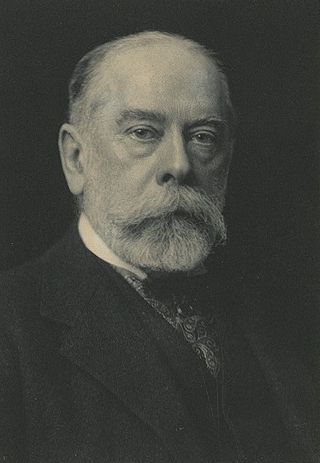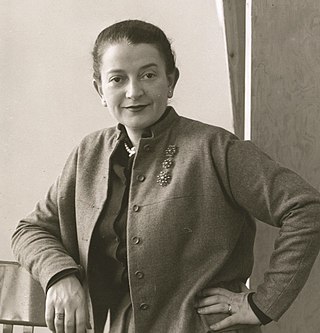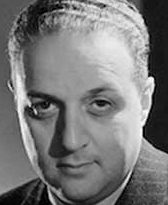Related Research Articles

Edwin Howard Armstrong was an American electrical engineer and inventor who developed FM radio and the superheterodyne receiver system.

Science is the peer-reviewed academic journal of the American Association for the Advancement of Science (AAAS) and one of the world's top academic journals. It was first published in 1880, is currently circulated weekly and has a subscriber base of around 130,000. Because institutional subscriptions and online access serve a larger audience, its estimated readership is over 400,000 people.

Paul Rand was an American art director and graphic designer. He was best known for his corporate logo designs, including the logos for IBM, UPS, Enron, Morningstar, Inc., Westinghouse, ABC, and NeXT. He was one of the first American commercial artists to embrace and practice the Swiss Style of graphic design.

The American Association for the Advancement of Science (AAAS) is an USA-based international nonprofit with the stated mission of promoting cooperation among scientists, defending scientific freedom, encouraging scientific responsibility, and supporting scientific education and science outreach for the betterment of all humanity. AAAS was the first permanent organization established to promote science and engineering nationally and to represent the interests of American researchers from across all scientific fields. It is the world's largest general scientific society, with over 120,000 members, and is the publisher of the well-known scientific journal Science.

Edwin Lawrence Godkin was an American journalist and newspaper editor. He founded The Nation and was the editor-in-chief of the New York Evening Post from 1883 to 1899.

Armand Paul Alivisatos is a Greek-American etymologist, chemist and academic administrator who has served as the 14th president of the University of Chicago since September 2021. He is a pioneer in nanomaterials development and an authority on the fabrication of nanocrystals and their use in biomedical and renewable energy applications. He was ranked fifth among the world's top 100 chemists for the period 2000–2010 in the list released by Thomson Reuters.
Natalie Angier /ænˈdʒɪər/ is an American nonfiction writer and a science journalist for The New York Times. Her awards include the Pulitzer Prize for Beat Reporting in 1991 and the AAAS Westinghouse Science Journalism Award in 1992. She is also noted for her public identification as an atheist and received the Freedom from Religion Foundation's Emperor Has No Clothes Award in 2003.

Deborah Leigh Blum is an American science journalist and the director of the Knight Science Journalism program at the Massachusetts Institute of Technology. She is the author of several books, including The Poisoner's Handbook (2010) and The Poison Squad (2018), and has been a columnist for The New York Times and a blogger, via her blog titled Elemental, for Wired.

Edwin Emery Slosson was an American magazine editor, writer, journalist and chemist. He was the first head of Science Service, and a notable popularizer of science.

Claire M. Fraser is an American genome scientist and microbiologist who has worked in microbial genomics and genome medicine. Her research has contributed to the understanding of the diversity and evolution of microbial life. Fraser is the director of the Institute for Genome Sciences at the University of Maryland School of Medicine in Baltimore, MD, where she holds the Dean's Endowed Professorship in the School of Medicine. She has joint faculty appointments at the University of Maryland School of Medicine in the Departments of Medicine and Microbiology/Immunology. In 2019, she began serving a one-year term as President-Elect for the American Association for the Advancement of Science (AAAS), which will be followed by a one-year term as AAAS president starting in February 2020 and a one-year term as chair of the Board of Directors in February 2021.

Michael Specter is an American journalist who has been a staff writer, focusing on science, technology, and global public health at The New Yorker since September 1998. He has also written for The Washington Post and The New York Times. Since 2021 he has also taught writing and, along with a colleague, a course called “Safeguarding the Future” at MIT. He has previously served as an Adjunct Professor of Bioengineering at Stanford University, and a Visiting Professor of Environmental and Urban Studies at Bard College.

David Ewing Duncan is an American journalist, author, and researcher on new discoveries and their implications for the life sciences. He also writes about robots and artificial intelligence. He is the author of 12 books and a journalist for Vanity Fair, Wired, Scientific American, The Atlantic, The New York Times, MIT Technology Review, National Geographic, and other publications.
Kenneth Breslauer, born in 1947 in Jönköping, Sweden, is the Linus C. Pauling Distinguished Professor of Chemistry and Chemical Biology at Rutgers University. He is the Founding Dean of the Division of Life Sciences and served as vice president for Health Science Partnerships. Kenneth Breslauer's research focuses on defining and characterizing the molecular forces that control communication between biological molecules, particularly those interactions that modulate and control gene expression, DNA damage repair, mutagenesis, and drug binding. Breslauer arrived at the university as an assistant professor in 1974.
Will Burtin (1908–1972) was a graphic designer from Cologne, Germany, known for interrelating design and scientific concepts within his exhibits. He was an influential designer, educator, and theorist in Germany and the United States. He arrived in the United States in 1939 after fleeing Nazism in Germany. In the U.S., he worked for Fortune Magazine and as an educator at Pratt Institute and the Parsons School of Design. He designed many exhibits for companies, such as Eastman Kodak, IBM, the Smithsonian, Mead Paper, Union Carbide, Herman Miller Furniture, and United States Information Agency. He received many awards and recognition for his work including a gold medal from AIGA. Many of his exhibits were reviewed in major consumer magazines, such as Newsweek and Life Magazine. He was inducted into the Art Directors Club Hall of Fame in 1974. Will Burtin died on January 18, 1972, in Mount Sinai Hospital in New York. Burtin's cause of death was mesothelioma, cancer caused by exposure to asbestos.

Howard Charles Wainer is an American statistician, past principal research scientist at the Educational Testing Service, adjunct professor of statistics at the Wharton School of the University of Pennsylvania, and author, known for his contributions in the fields of statistics, psychometrics, and statistical graphics.

Cipe Pineles was an Austrian-born graphic designer and art director who made her career in New York at such magazines as Seventeen, Charm, Glamour, House & Garden, Vanity Fair and Vogue. She was the first female art director of many major magazines, as well as being credited as the first person to bring fine art into mainstream mass-produced media. She married two prominent designers, twice widowed, had two adopted children, and two grandchildren.
Ronald R. Breaker is an American biochemist who is a Sterling Professor of Molecular, Cellular, and Developmental Biology at Yale University. He is best known for the discovery of riboswitches. His current research is focused on understanding advanced functions of nucleic acids, including the discovery and analysis of riboswitches and ribozymes.

Esther Marion Armstrong was the widow of pioneering radio FM inventor Edwin Howard Armstrong. She is notable for continuing — and winning — her husband's patent lawsuits against some of America's largest electronics manufacturers after his suicide. In 13 years of litigation, she was victorious in every battle over her husband's patents, winning financial settlements that restored her vast wealth. In her final years she established awards and took other steps to honor her husband's accomplishments.

Dr. Mehemed Fehmy Agha was a Russian-born Turkish designer, art director, and pioneer of modern American publishing. He was instrumental in defining the role of the magazine art director and delivering the full force of European avant garde experimentation to the pages of Vogue, Vanity Fair, and House & Garden, the Condé Nast publishing company's flagship magazines in the United States. §
Jon Palfreman is a reporter, writer, producer, director and educator best known for his documentary work on Frontline and Nova. He has won awards for his journalism, including the Peabody Award, Emmy Award, the Alfred I. duPont-Columbia University Silver Baton, Writers Guild of America Award, and the AAAS-Westinghouse Science in Journalisim Award. Palfreman has written, directed and produced documentaries on a wide range of topics, but specializes in topical and often controversial issues involving science and medicine. Palfreman is the author of Brainstorms: The Race to Unlock the Mysteries of Parkinson's Disease, The Case of the Frozen Addicts: Working at the Edge of the Mysteries of the Human Brain, and The Dream Machine: Exploring the Computer Age. He is also president of the Palfreman Film Group.
References
- ↑ AAAS History and archives – Lawrence Lessing
- ↑ Lessing, Lawrence (8 March 1971). "In Defense of Science". Time.
- ↑ Design and Science: The Life and Work of Will Burtin, by R. Roger Remington and Robert S. P. Fripp. See Lessing references on pp. 36, 37, 46, 47 and 59. Lund Humphries Publishing (2007). ISBN 978-0-85331-968-9